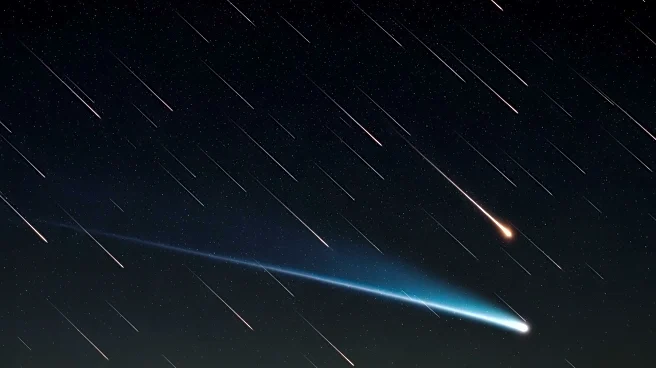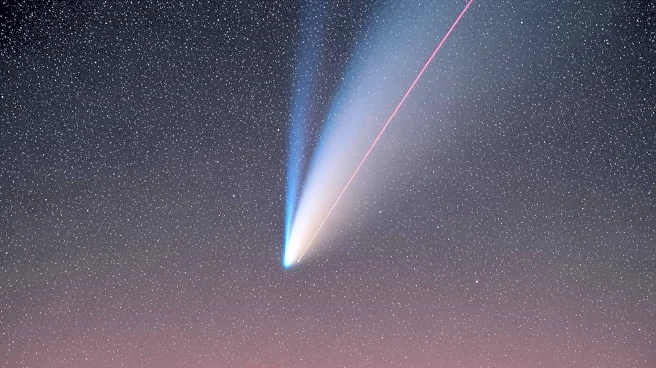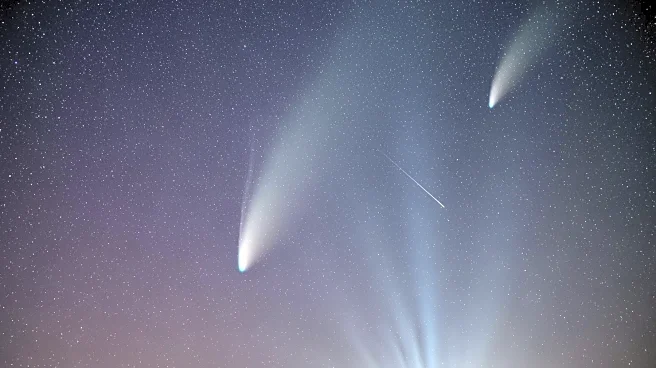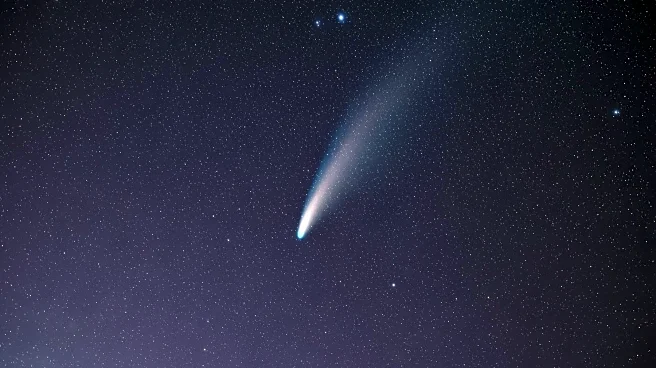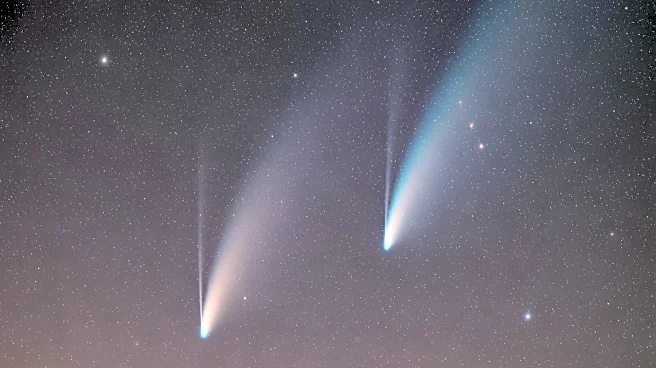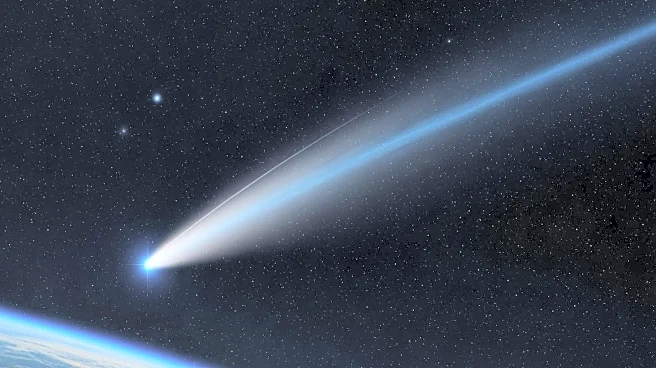What's Happening?
The Orionid meteor shower is peaking today, October 21, coinciding with a New Moon phase, which is expected to yield approximately 20 meteors per hour. The radiant of the shower is located near Betelgeuse
in the constellation Orion. Additionally, Comet C/2025 A6 (Lemmon) is making its closest approach to Earth at 28.6 million miles, appearing as a 5th-magnitude object visible in both morning and evening skies within the constellation Boötes. A close conjunction between Mercury and Mars is also visible in the evening sky, with Mercury positioned approximately 2 degrees south of Mars.
Why It's Important?
The peak of the Orionid meteor shower offers a spectacular celestial event for stargazers, providing an opportunity to observe meteors in the early morning hours. The proximity of Comet Lemmon to Earth allows for enhanced visibility, making it an exciting target for amateur astronomers and photographers. These events highlight the dynamic nature of our solar system and encourage public interest in astronomy. The conjunction of Mercury and Mars adds to the celestial spectacle, offering a rare view of planetary alignment.
What's Next?
Observers can continue to enjoy the Orionid meteor shower and Comet Lemmon's visibility in the coming days. The transit of Titan across Saturn's disk is scheduled for later today, providing another opportunity for astronomical observation. As these events unfold, astronomers and enthusiasts will likely share their observations and photographs, contributing to the collective understanding of these phenomena. The continued visibility of Comet Lemmon and the meteor shower will keep the public engaged with astronomy.
Beyond the Headlines
These celestial events underscore the importance of preserving dark skies for astronomical observation, as light pollution can hinder the visibility of such phenomena. The interest generated by these events may lead to increased advocacy for dark sky preservation and support for astronomical research. The conjunction of Mercury and Mars, along with the transit of Titan, highlights the intricate movements within our solar system, offering insights into planetary dynamics and interactions.
